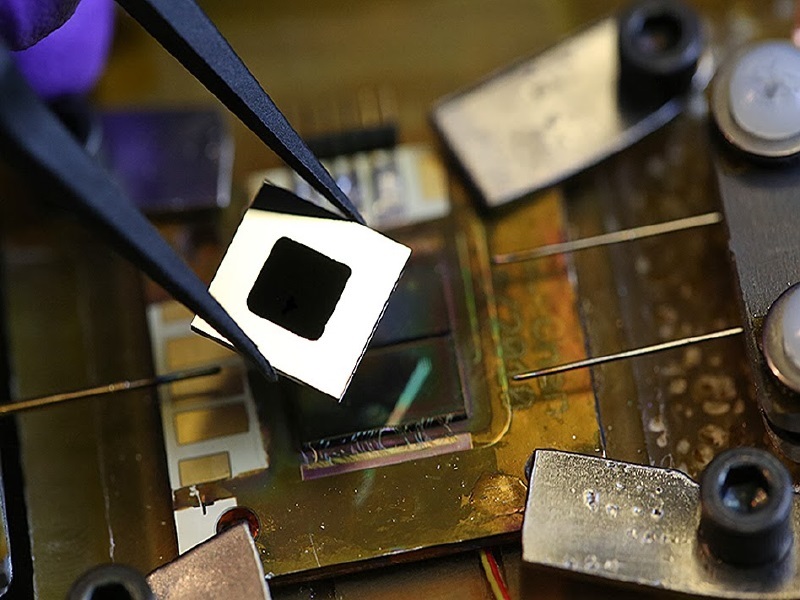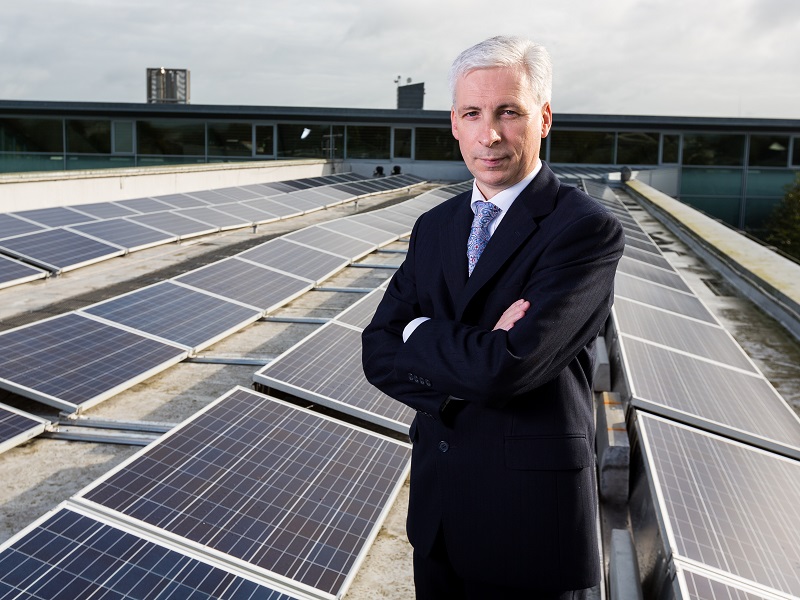Cold fusion, giant solar plants and windy shores make up contributions to this year’s list of stories about breaking the world’s ties with fossil fuels.
1. Power output of potential cold fusion reactor baffles scientists
By a considerable margin, the exploits of Andrea Rossi and his seemingly too-good-to-be-true story of creating a cold fusion reactor known as the E-Cat ‘baffled’ scientists in 2014.
If the E-Cat is indeed capable of what it claims it can achieve, home and businesses could be powered for life with clean, almost limitless energy through the process of cold fusion, which has eluded scientists since man first discovered how to harness nuclear energy through fission.
While many ‘eureka’ moments have been claimed by scientists who believe they have cracked the code, all were proven to be hoaxes, so was this to be any different?
According to Rossi’s published paper on the E-Cat, six independent scientists analysed the device and they all came to the conclusion that the E-Cat was indeed producing, over the course of a 32-day period, 1.5MW of energy that appeared to be nuclear fusion.
The only problem being that according to other claims, to call it independent is false, given most of the analysts were working with, or had worked with, Rossi previously, and Rossi himself had initiated the reactor, which would be the crucial part to analyse.
The jury is still out on the E-Cat, but it certainly raises interesting questions and possible developments for the future.

Abstract science image by pixelparticle via Shutterstock
2. Bill Gates investigates cold fusion
One person who is certainly not dismissing the potential existence of cold fusion is Microsoft co-founder and the world’s richest man, Bill Gates, who recently travelled to Italy to get a closer look at the country’s leading energy and technology agency on its recent discoveries with regard to cold fusion technology, otherwise referred to as low energy nuclear reaction (LENR).
While no claims of a working reactor were shown to Gates, his interest remains particularly high with regard to the subject, having last June written a piece about LENR and describing his aspirations for it: “I’m optimistic that science and technology can point the way to big breakthroughs in clean energy and help us meet the world’s growing needs. In this area, like so many, there are no quick fixes, which makes it even more urgent to start work now.”
Watch out for possible investments in the technology in 2015 and beyond.

Microsoft co-founder Bill Gates during his recent briefing by the ENEA, the Italian national agency for new technologies, energy and sustainable economic development in Frascati. Image via the ENEA
3. Gravity on ice: combined satellite data illustrates impact of Antarctic melt on gravity
In what proved to be a fortunate accident, a European Space Agency (ESA) satellite that was created to measure the change in Earth’s gravity stumbled upon the fact it could also measure the rate at which the ice in Antarctica has melted over a decade.
Known as the Gravity Field and Steady-State Ocean Circulation Explorer (GOCE) satellite, the device has been measuring Earth’s gravity in great detail for the past four years – more than double its original planned life in orbit, and in doing so, has produced the most accurate gravity model of the Earth, providing scientists with greater understanding of things such as the boundary between Earth’s crust and upper mantle and the density of the upper atmosphere.
A team of German and Dutch scientists were then able to combine this GOCE data with data from the Gravity Recovery and Climate Experiment (GRACE), and they can now look at changes in ice mass in small glacial systems – offering even greater insight into the dynamics of Antarctica’s different basins.
4. MIT tech to greatly improve solar-energy efficiency
If you’re to ask any engineer or scientist working in solar-energy development, they will tell you the overriding factor in the timeline for future solar power is improving its efficiency.
Currently, the average solar efficiency of a solar panel stands at 12pc-15pc which, when put into perspective, doesn’t stand as being the most efficient of renewable-energy sources.
In January this year, a Massachusetts Institute of Technology (MIT) team led by graduate student Andrej Lenert saw its design collect the sun’s rays through a photovoltaic cell. The team hopes to one day increase solar-energy harvesting to 20pc efficiency.
The team was able to concentrate sunlight to a factor of 750 times more than its normal levels, which then heated the absorber-emitter to a temperature of 962°C.

A nanophotonic solar thermophotovoltaic device. Photo by John Freidah
5. Small Irish renewable-energy generators to sell power for the first time
This year marked the first time small renewable energy generators in Ireland were able to sell electricity on the Single Electricity Market (SEM), the wholesale electricity market established across the whole island of Ireland.
Since only 6.8pc of the country’s energy supply comes from Ireland, schemes such as these where households can sell excess energy to the open market could hopefully spark a turnaround, at least in rural areas, if Ireland is to meet its target of 16pc renewable energy by 2020.
The SEM’s decision marked the first time a fully community-funded renewable-energy company has entered the Irish market under the name Community Renewable Energy Supply (CRES) and acts as a sister company to Templederry Community Wind Farm in Tipperary, Ireland’s only operational community-owned wind farm.
.jpg)
6. Urb-E – the world’s smallest electric vehicle
The electric-car market in Ireland may be slow, but there’s still dozens of other options for enthusiastic electric-heads looking to find cleaner options of getting around.
Step forward the Urb-E, which claims to be the world’s smallest usable electric vehicle.
In February, the Indiegogo campaign showed off a relatively simple concept of a foldable bike that contained a lithium-ion 36V 10Ah battery with a pretty reasonable 32km range and a charging time of about three hours.
Urb-E even reaches a top speed of 24km/h so it’s by no means a lumbering dinosaur.
Since its appearance, the team behind the bike have exceeded its crowdfunding target, getting twice the amount of its US$150,000 goal. The bike is now available for pre-orders.

7. Ireland’s largest solar-power project completed
While the Irish climate is, by a considerable distance, more suited to wind power than solar power, Ireland made a major step to offering some rays of sunshine for the industry as it was announced in October that Tipperary is now home to Ireland’s largest solar photovoltaic (PV) project after 800 solar panels installed across nine buildings entered service.
With the installation of these 800 solar panels, Ireland’s entire solar PV energy-producing capability has increased 44pc. While this is still behind in the renewable energy stakes, it will at least reduce Tipperary County Council’s energy bills by 11pc.

Joe MacGrath, chief executive of Tipperary County Council, stands in front of 180 solar photovoltaic panels on the civic offices in Nenagh, Co Tipperary
8. Batteries that can charge 70pc in two minutes and last over 20 years
Fast-charging batteries than can charge to 70pc in less two minutes is not far away from completion and could be a reality in 2015. Research conducted by scientists from Nanyang Technological University (NTU) in Singapore developed batteries that replaced the traditional graphite used for the anode in lithium-ion batteries with a new gel material made from lithium dioxide.
Perhaps even more amazing is that this new battery will be capable of enduring 10,000 charging cycles, which is 20 times more than the current 500 cycles of today’s batteries, giving it a lifespan of more than 20 years, which doesn’t say much for most current smartphone and laptop batteries.
While smaller consumer items are often the first port of call for battery improvements, the team actually envisions the technology being put in something a lot larger: e-cars to be exact.

(Clockwise from top) NTU associate professor Chen Xiaodong with research fellow Tang Yuxin and PhD student Deng Jiyang
Main wind farm image via Shutterstock